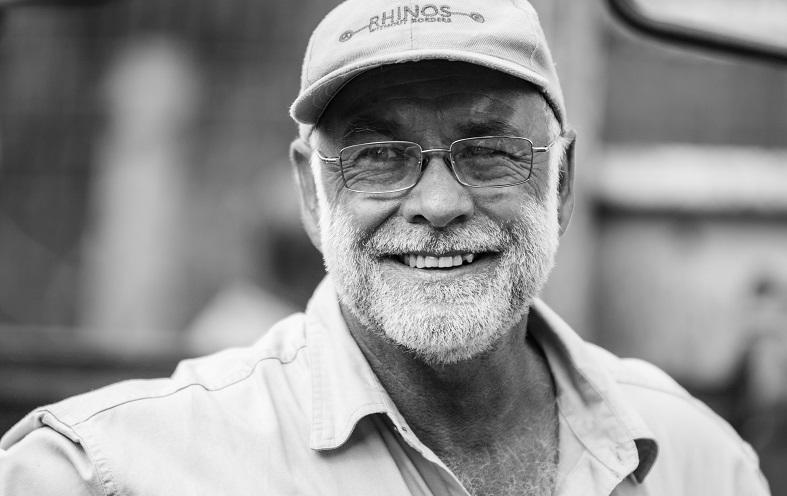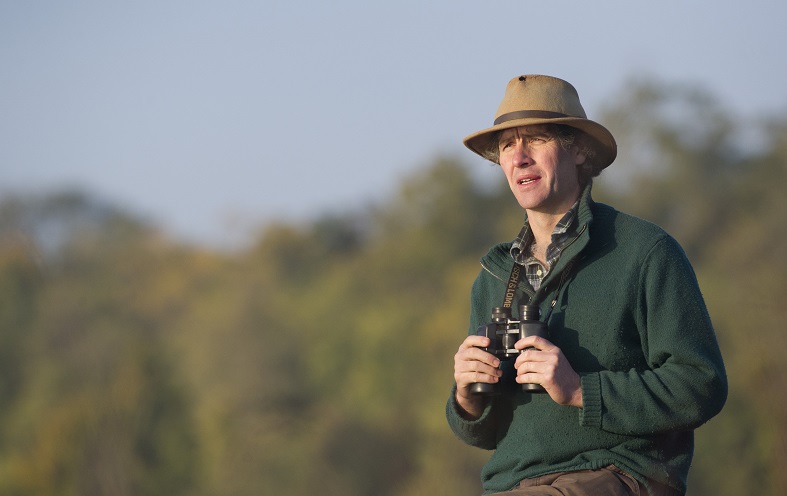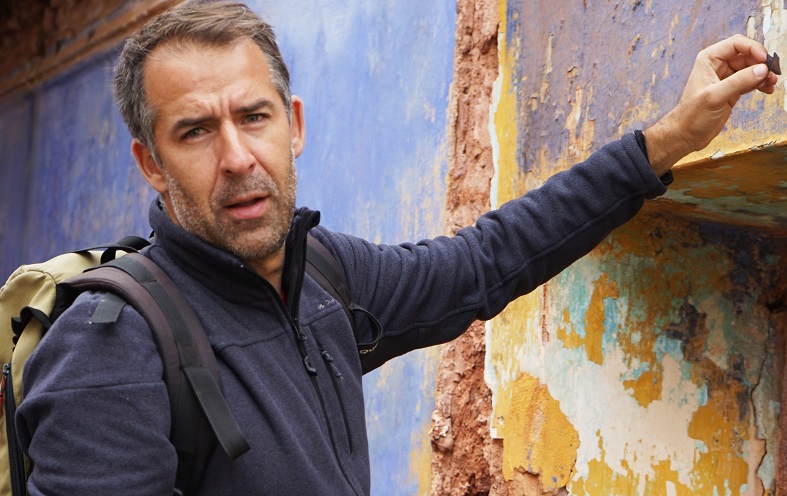
When in many places sustainability was still an abstract concept on the discussion table, a Thailand-based travel company already championed the triple bottom line of people, planet, and profit. Khiri Travel‘s mission: to maximise the benefits of tourism for individuals and local communities, while minimising the negative impact, across its operations in eight Asian countries.
In this week’s sustainability changemaker interview, meet Willem Niemeijer. The founder of Khiri Travel shares his thoughts on Asia as (sustainable?) destination and how we can use technology to disperse visitors, in response to destination overcrowding. Willem also illustrates how the Cardamom Tented Camp ecolodge involves guests in the conservation of forests and the surrounding wildlife, with the poignant tagline of ‘Your Stay Keeps the Forest Standing’.
And we hear about the challenges in elephant conservation right now, owing to the absence of ecotourism during the coronavirus pandemic.
Willem, having dedicated many years to developing destinations and tourism businesses in Southeast Asia – what got you interested in the region? Why did you decide to dedicate your career to tourism?
My love for travel developed during my early teens when I used to go on solo bicycle trips. These trips started in my birth country, The Netherlands, followed by trips through Germany, Belgium, Luxembourg, and the UK.
When I was 17, I bought my first flight ticket to Indonesia and I fell in love with Asia when I travelled there. I soon returned to other top destinations when I landed a job at a student travel organization in The Netherlands.
Later, I got a job offer at a small DMC in Thailand in 1987, and even though I had planned for maybe a year of gaining experience, I ended up staying and set up Khiri Travel.
Your Cardamom Tented Camp in Cambodia was a Changemaker finalist at World Travel and Tourism Council’s Tourism for Tomorrow Awards 2019. What does such recognition mean to you personally, and how does it benefit your organisation’s efforts to conserve wildlife and forests?
Cardamom Tented Camp is the result of a unique partnership between the Minor Hotel Group’s Golden Triangle Asian Elephant Foundation, the Cambodia-based nature conservation organisation Wildlife Alliance and our YAANA Ventures.
It is a not-for-profit project, with proceeds going to the Wildlife Alliance rangers who help to protect the 18,000 hectares of rainforest that the camp is located in.
We’re convinced that tourism is a force for good. To be a finalist at the WTTC’s Tourism for Tomorrow Awards, after only one year of opening is a recognition that the concept has proven correct. The international attention that the event gave the project made a big positive impact.
Khiri Travel was the first DMC in Southeast Asia to be Travelife-certified. How has this certification helped your business to achieve the triple bottom line of sustainability: people, planet, and profit?
We were, together with one other, the first to get certified in some of our larger destinations a few years back, and we are now the first to get certified in all seven destinations which we operate in.
The triple bottom line implies that the impact on all three essential parts of the business is measured. Travelife certification helps in setting up a framework that keeps challenging the business to operate in a measurable and more sustainable way. It also shows that the certification is not the end result – it’s just a step in a continuing journey of doing things better.
Wildlife conservation is under severe stress right now due to the absence of ecotourism because of coronavirus restrictions. How is this affecting your own operations and ecotourism experiences offered through your company?
The total ban on travel, going on for months now, continues to have a devastating impact on every aspect of society, including the efforts on nature conservation. First in line are projects that get almost exclusively funded by tourism. A prime example of that is the elephant camps in Thailand. The feeding and medical care of these captive elephants is very expensive.
Our friends at the Golden Triangle Asian Elephant Foundation have already taken in many of the elephants of the camps that could no longer afford the upkeep – but they themselves are the foundation of a business largely dependent on tourism, so funds start to run dry there too.
Our own Cardamom Tented Camp has started a Fundrazr Campaign to ensure the rangers keep getting the support over the next crucial months, hoping travel will pick up after that.
Efficient management of crowds through technology is one of your suggestions for a sustainable tourism recovery after the COVID-19 crisis. With many countries, especially developing nations, waiting to recover lost ground with regards to revenue through tourism, do you think there will actually be an emphasis on countering overtourism?
Indeed, technology can be deployed to tackle overtourism, in particular at specific sites like Angkor, the Grand Palace, or National Parks. For example, to make entrance tickets only available online, with a limited amount of visitors per time slot. This is already done successfully for years in museums in the US and Europe.
Better spread of tourists during the day, and perhaps even dynamic pricing, will result in better yield at the same time. As some effort is needed to access some locations, tourists are encouraged to visit other sites instead, spreading the tourism dollar.
The private sector and NGOs need to play a leading role in encouraging governments to start implementing such technology.
Visitor dispersion is seen as the panacea for overtourism; but how can destinations ensure that the locals of the “new” destinations are prepared to receive the influx of visitors when they are already aware of the negative implications of mass tourism?
New destinations can start with the implementation of best practices for visitor management. There is an enormous amount of resources available. On a local level, the decision to develop a tourist site needs, of course, to be in agreement with the local community, who have to be aware of the positive effects, such as job opportunities and income diversification, as well as ways to mitigate any possible negative effects.
Which destination in Asia do you think has done a commendable job in tackling overcrowding through tourism? What can other destinations learn from them?
Well, there is always Singapore as an example, but that nation-state may not always be relevant compared to its much larger neighbours. Some private museums, such as the Jim Thompson’s House (in Bangkok) can be looked at as examples of good practice.
Bhutan is often cited as an example with their limitations on visitors, but again, this is a very specific example that is not going to work everywhere and thus difficult to recommend to most other countries. By and large, as destinations, all Asian nations need to pioneer this on their own.
How have your views on tourism sustainability changed over the years, and through your experience working with destinations?
In the early years of Khiri Travel, we felt it was just logical to give back to the community. There were much less tourists, 20-25 years ago. The communities we visited on our tours often clearly needed some help. Travelers also had another mindset, knowingly visiting very poor countries.
As development came along, for the casual visitor, it’s sometimes harder to understand why support is still needed. We have set up our charity Khiri Reach to highlight some of the causes that continue to need support.
As for operational sustainability, there have been massive developments. Public knowledge about climate change, pollution, and human rights has given a tremendous boost to the cause of sustainability. Certification programs organized under GSTC have fine-tuned the efforts.
Your three bits of advice for sustainable tourism entrepreneurs or travel business owners in Asia, how to support wildlife conservation, and at the same time ensure their own economic sustainability?
Make sure your business has a higher purpose than just financial profits, while at the same time making sure it is profitable. Without money in the bank, you cannot sustain a business.
From early on, try to build your business around sustainability criteria, outlined by GSTC-aligned certification bodies or even the UN Sustainable Development Goals (SDGs). It makes your certification process so much easier later on.
When your business is not directly involved in wildlife conservation, which is likely, you can still help by raising awareness amongst your staff and clients, and by supporting conservation efforts.
Thank you, Willem.
Connect with Willem Niemeijer on LinkedIn and Twitter.
Did you enjoy our interview with Willem Niemeijer of Khiri Travel, on elephant conservation in Asia, solutions to overtourism and how to run a sustainable travel business? Thanks for sharing!











